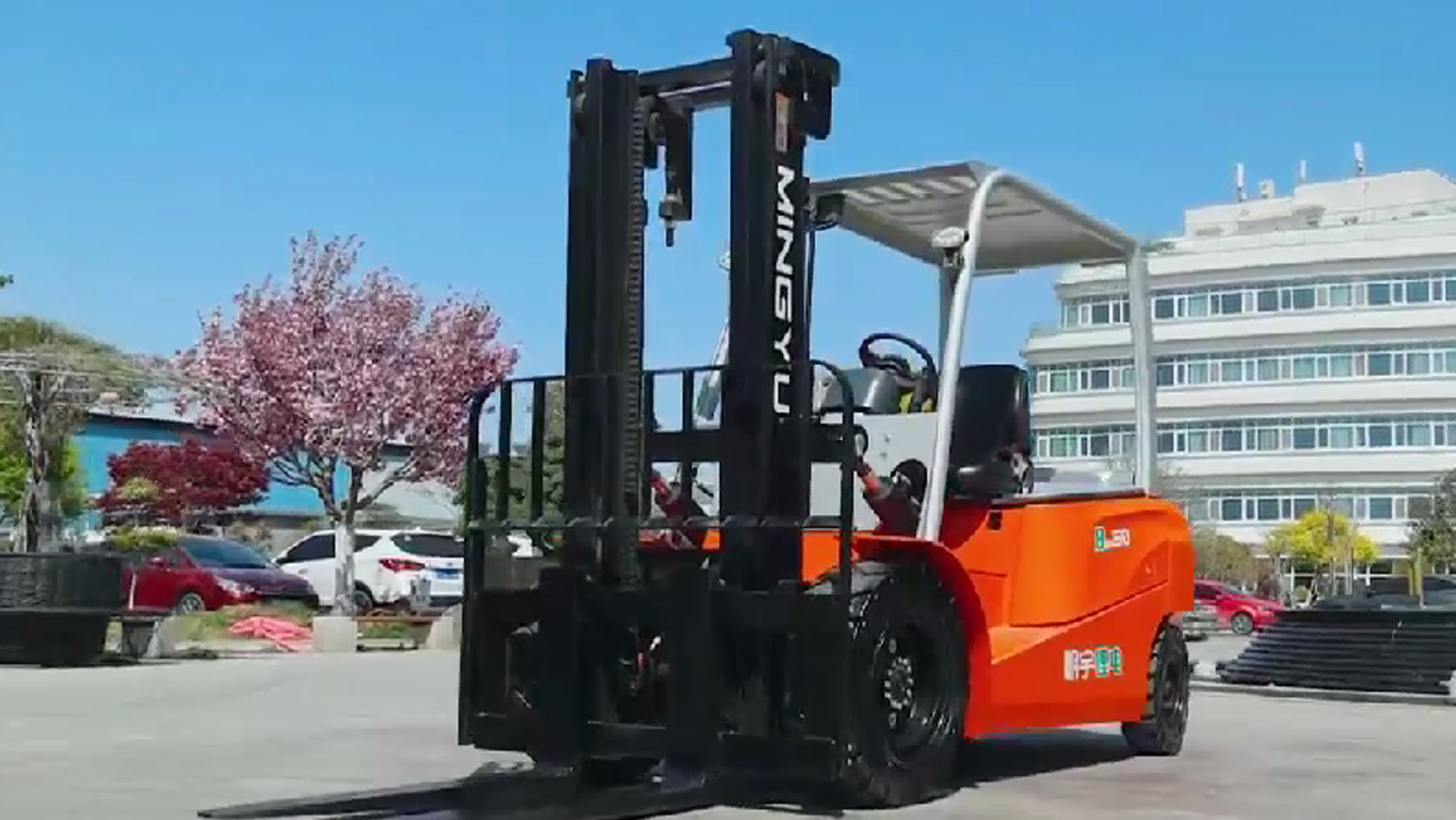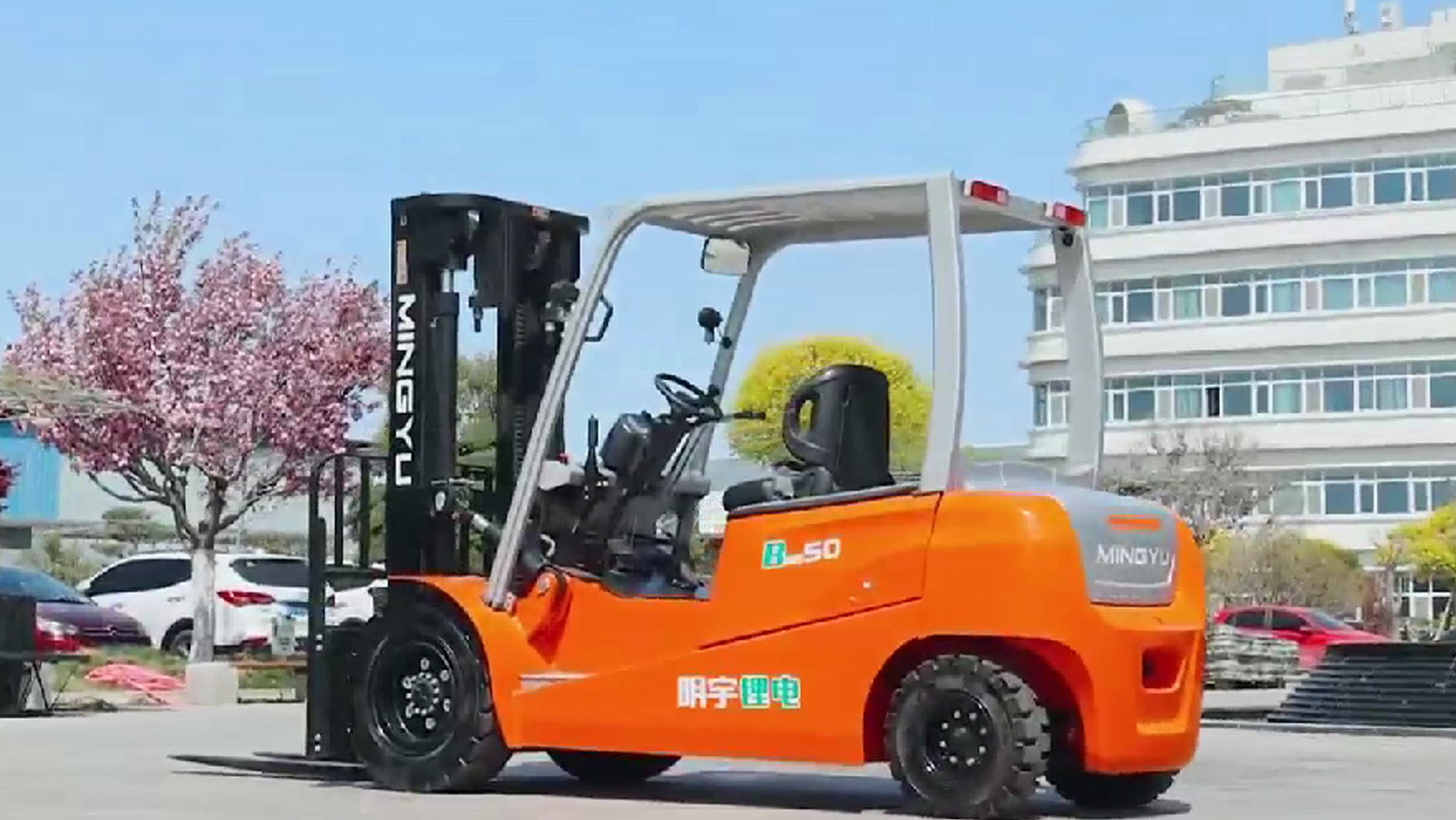1. Introduction Material handling plays a crucial role in various industries, from warehouses to manufacturing plants, where the movement, storage, and control of materials are essential to keep operations running smoothly. Choosing the right equipment for these tasks is critical for improving efficiency, safety, and reducing costs. One of the most common machines used for material handling is the forklift, with electric forklifts becoming increasingly popular in various sectors. But with different options available, a key question arises: Is an electric forklift the best choice for material handling? This article explores the advantages and limitations of electric forklifts, compares them with internal combustion forklifts, and discusses the industries where electric forklifts are most beneficial. By the end, you'll have a clearer understanding of whether an electric forklift is the right fit for your material handling needs.
2. What is an Electric Forklift? An electric forklift is a type of forklift that operates on electric power rather than traditional internal combustion engines. These forklifts use electric motors to drive the wheels and raise and lower the load, with power coming from a battery pack. The most common types of electric forklifts include counterbalance forklifts, reach trucks, and pallet jacks, each suited for different tasks and environments. Electric forklifts generally use two types of batteries: lead-acid batteries, which are cheaper and commonly used, and lithium-ion batteries, which are newer and offer advantages in terms of lifespan, charging time, and overall performance. The batteries of electric forklifts need to be recharged after several hours of use, which typically takes between 6-8 hours for full charging, depending on the type of battery used. Compared to traditional forklifts powered by fuel (such as gasoline or diesel), electric forklifts offer several distinctive benefits in terms of efficiency, noise reduction, and environmental impact.

3. Benefits of Electric Forklifts in Material Handling
Environmental Benefits: Electric forklifts are a cleaner and more environmentally friendly option. Unlike internal combustion forklifts that emit harmful gases such as CO2, electric forklifts produce zero emissions during operation, making them ideal for use in closed, indoor environments such as warehouses. Additionally, they contribute to reducing the overall carbon footprint of businesses, especially in industries focusing on sustainability.
Cost Efficiency: Although electric forklifts can have a higher upfront cost than their internal combustion counterparts, they are generally more economical over the long term. The main cost-saving factor is the lower operational cost. Electric forklifts require electricity rather than fuel, which is often cheaper. Furthermore, maintenance costs are lower because electric motors have fewer moving parts, reducing the need for frequent repairs and upkeep.
Performance and Productivity: Electric forklifts offer smooth operation with precise control, leading to greater productivity in material handling tasks. They are often preferred for indoor environments where space is limited, as they are compact and highly maneuverable. Electric forklifts can provide reliable performance in tasks requiring heavy lifting, transporting pallets, or stacking goods.
Workplace Safety: Electric forklifts are safer for indoor use compared to their combustion engine counterparts. They do not emit exhaust fumes, which can be harmful in poorly ventilated spaces. Additionally, their quiet operation contributes to a safer working environment, as workers can hear their surroundings better, reducing the chances of accidents.
Maintenance and Durability: Electric forklifts require less maintenance due to fewer components that wear out. With no need for oil changes, air filters, or spark plugs, maintenance is more straightforward and typically involves battery care, tire checks, and periodic inspections. This leads to fewer downtime incidents, helping businesses maintain smooth operations.
4. Challenges and Limitations of Electric Forklifts

Battery Life and Charging: One of the primary limitations of electric forklifts is their battery life. While modern batteries are improving, the need for charging remains a significant factor. Depending on the workload and usage, operators may need to charge the forklift multiple times a day, which could lead to downtime if charging stations are not available or if the batteries are slow to recharge.
Initial Cost: The initial cost of an electric forklift is generally higher than that of a gas or diesel-powered forklift. While this is often offset by lower long-term operational costs, the upfront investment can be a barrier for smaller businesses or operations with tight budgets.
Limited Outdoor Use: Electric forklifts are best suited for indoor operations, especially in warehouses or distribution centers. They may not be as effective in harsh outdoor conditions, particularly in wet or uneven terrain. In these environments, internal combustion forklifts, which are built for rough outdoor conditions, may be more appropriate.
Battery Disposal and Recycling: While electric forklifts are better for the environment during operation, the disposal and recycling of their batteries can be a concern. Lead-acid batteries, in particular, contain harmful chemicals that must be disposed of properly. Fortunately, recycling programs are available, but this remains an environmental consideration when choosing electric forklifts.
5. Comparing Electric Forklifts to Internal Combustion Engine Forklifts
Power and Capacity: Internal combustion forklifts are generally more powerful than electric forklifts, particularly for heavy-duty tasks that require lifting large loads over long distances. They are better suited for outdoor use and can operate on rough terrain, unlike electric forklifts, which are best for smoother, indoor surfaces. Internal combustion forklifts also offer greater fuel capacity and longer operation times without needing to be recharged.
Fuel Source: Electric forklifts rely on electricity, which can be generated from a variety of renewable sources, making them more sustainable. In contrast, internal combustion forklifts use fuel like gasoline, diesel, or propane. These fuels can be expensive and require storage space on-site, while electric forklifts have the advantage of using standard electricity, which is readily available in most facilities.
Maintenance: Electric forklifts generally require less maintenance due to the simplicity of their electric motors. They don’t need oil changes, air filters, or exhaust systems, unlike internal combustion forklifts. This lowers the overall cost of maintenance, making electric forklifts a more attractive long-term investment for many businesses.
Operating Environment: Electric forklifts are ideal for indoor use due to their quiet operation and lack of exhaust emissions. Internal combustion forklifts are more suitable for outdoor and rough-terrain applications due to their powerful engines and higher ground clearance.
6. Applications and Industries Best Suited for Electric Forklifts Electric forklifts are particularly useful in industries where indoor operations dominate, such as warehouses, distribution centers, and manufacturing plants. They are perfect for industries that prioritize cleanliness and sustainability, including food production, pharmaceuticals, and retail. Additionally, businesses aiming to reduce their carbon footprint often opt for electric forklifts. In contrast, industries such as construction or agriculture, where rough terrain and outdoor conditions are prevalent, may still prefer internal combustion forklifts due to their ability to perform in harsh environments.

7. Future Trends and Innovations in Electric Forklifts
Battery Technology Advancements: The future of electric forklifts lies in improving battery technology. Faster-charging lithium-ion batteries are becoming more common, offering higher energy densities and longer lifespans. These improvements could reduce downtime and extend the operational hours of electric forklifts.
Autonomous Electric Forklifts: Automation is playing a significant role in material handling, and electric forklifts are at the forefront of this transformation. Autonomous forklifts can navigate through warehouses and perform tasks with minimal human intervention, optimizing productivity and reducing the risk of human error.
Government Incentives and Regulations: Governments worldwide are pushing for a greener future, with policies promoting the adoption of electric vehicles, including forklifts. As more businesses seek to comply with sustainability regulations, the demand for electric forklifts will continue to grow, driven by incentives and subsidies to reduce the cost of electric equipment.
8. Conclusion Electric forklifts offer a range of benefits, including environmental sustainability, cost efficiency, and enhanced safety. They are ideal for indoor material handling operations and are an excellent choice for businesses looking to reduce their carbon footprint. However, they are not without limitations, including the need for frequent charging and higher initial costs. When compared to internal combustion forklifts, electric forklifts excel in indoor applications but may fall short in rugged outdoor environments. For businesses focused on sustainability and indoor operations, electric forklifts are undoubtedly the better choice. As technology advances and battery life improves, electric forklifts will continue to evolve, making them an increasingly attractive option for material handling in various industries.
Post time:Apr.10.2025
